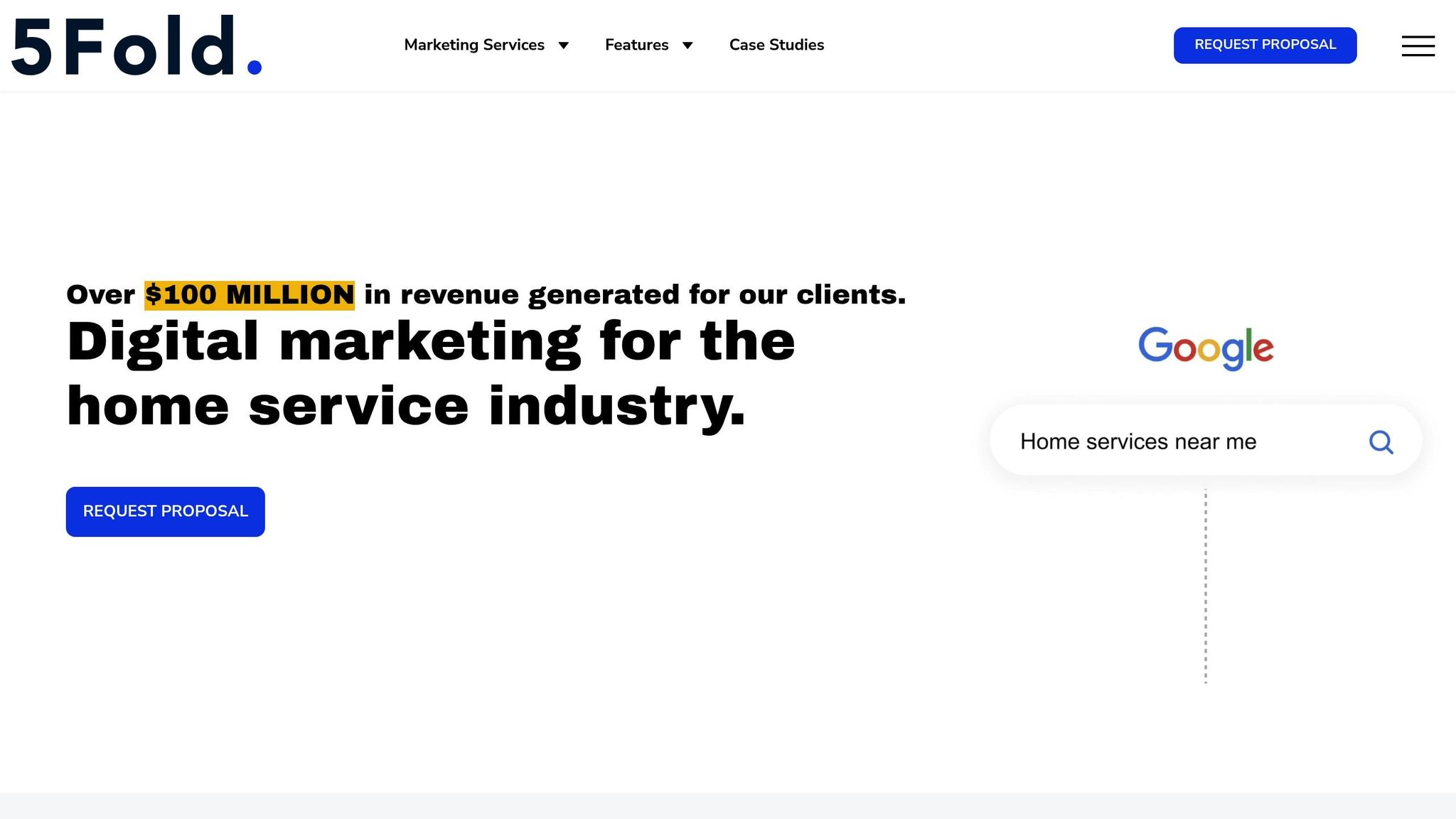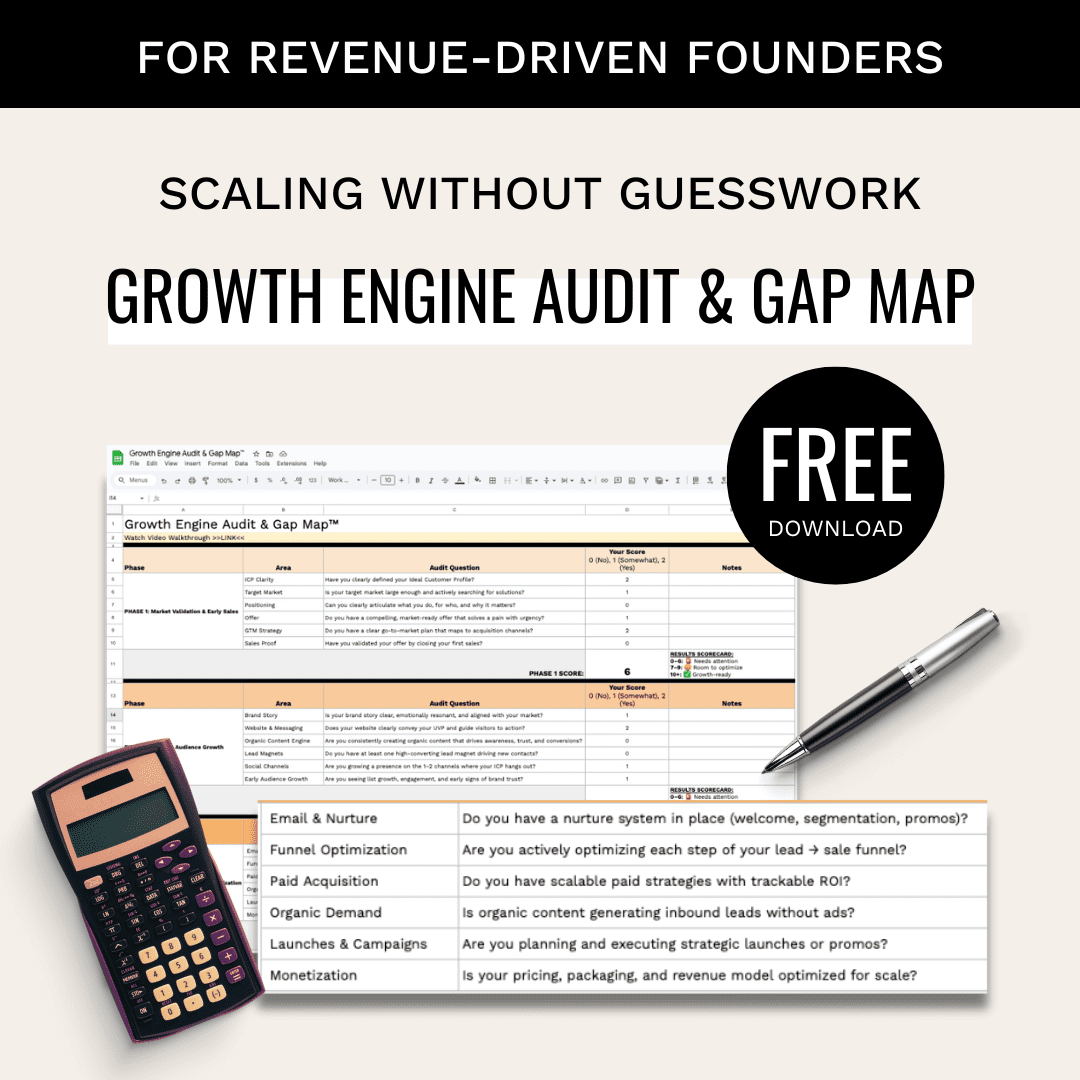Want to make smarter marketing budget decisions? Here’s how data-driven budgeting can help:
- Focus on measurable results: Use data like customer acquisition costs (CAC) and return on ad spend (ROAS) to guide spending.
- Align with business goals: Tie every dollar to clear objectives for growth or efficiency.
- Track and refine: Continuously monitor performance metrics and adjust budgets based on results.
- Leverage tools: Use AI and predictive tools to forecast outcomes and optimize spending.
- Avoid common mistakes: Stay flexible, avoid outdated data, and account for seasonal trends.
Quick Comparison of Traditional vs. Data-Driven Budgeting:
| Aspect | Traditional | Data-Driven |
|---|---|---|
| Customer Acquisition | Unreliable results | Cost-efficient growth |
| Resource Allocation | Based on assumptions | Guided by evidence |
| Performance Tracking | Limited insights | Clear, actionable metrics |
| Marketing ROI | Hard to measure | Quantifiable outcomes |
Key Takeaway: Data-driven budgeting helps tech companies lower costs, improve ROI, and grow predictably by relying on evidence – not guesswork.
Key Elements of Data-Driven Budgeting
Connecting Budgets to Business Goals
To make the most of your marketing budget, tie every dollar to a clear business objective. This means focusing spending on initiatives that directly contribute to growth or other key targets. Leading tech companies excel at this by using reliable data to guide their financial decisions, ensuring their budgets align with their goals. Let’s dive into how to ensure that data is dependable.
Ensuring Data Accuracy
The quality of your data can make or break your budgeting decisions. Inaccurate or incomplete information risks wasting resources and missing opportunities. To ensure your data is reliable, consider these steps:
- Use Precise Tracking Tools
Employ tools like UTMs, conversion tracking, and customer journey mapping to capture detailed and accurate data. - Conduct Regular Audits
Schedule monthly checks to spot and fix tracking issues, broken tags, or inconsistencies in reporting. - Integrate Data Sources
Combine data from platforms like CRM systems, marketing automation tools, and analytics dashboards to create a single, unified view of performance.
Making Objective Decisions
With accurate data in hand, you can make fair and evidence-based budget decisions. A structured approach ensures your choices are grounded in facts and easy to justify.
Lillian Pierson, founder of Data-Mania, emphasizes the value of this approach:
"When you work with me, you gain a strategic partner who is deeply invested in your success. I bring a data-driven approach, a passion for innovation, and a relentless focus on results to help you achieve your most ambitious goals." – Lillian Pierson, Data-Mania
To stay on track, define clear success metrics, standardize how you evaluate results, document key decisions, and routinely measure actual performance against your forecasts. This ensures your budgeting process remains focused and effective.
Methods and Tools for Budget Planning
Score-Based Priority Systems
Scoring your marketing efforts can help tech companies decide how to allocate resources more effectively. This involves evaluating each initiative based on:
- Cost Efficiency: Compare the cost of the activity to its expected return.
- Performance Potential: Assess how much the activity could impact your business goals.
- Risk Assessment: Consider the challenges and risks tied to implementation.
You can assign a score (e.g., 1–5) to these factors to create a clear priority ranking. Once you have these scores, take it a step further by reviewing how specific channels perform to fine-tune your budget allocation.
Marketing Performance Analysis
To make informed decisions, track key metrics for each marketing channel, such as:
- Customer acquisition cost (CAC)
- Return on ad spend (ROAS)
- Customer lifetime value (CLV)
- Conversion rate
Monitoring these metrics regularly helps you spot trends and adjust your spending strategy as needed. Additionally, incorporating AI tools can improve the accuracy of your forecasts and provide deeper insights.
AI and Predictive Tools
AI-powered tools can offer detailed forecasts and actionable recommendations. These tools are designed to:
- Examine historical data to predict future outcomes.
- Streamline budget allocation across various channels.
- Suggest real-time adjustments to improve performance.
"When you work with me, you gain a strategic partner who is deeply invested in your success. I bring a data-driven approach, a passion for innovation, and a relentless focus on results to help you achieve your most ambitious goals." – Lillian Pierson, Data-Mania
When adopting AI and predictive tools, ensure they integrate seamlessly with your current marketing stack and align with your business goals. Regularly updating and calibrating these tools is crucial to keeping them accurate as market conditions evolve.
5Fold Marketing Maximizes ROI With Data-Driven Budget …

4-Step Budget Planning Process
Creating an effective budget starts with careful planning and regular updates. This approach ensures every dollar is spent wisely, building on the importance of accurate data and clear decisions.
Setting Up Data Collection
To track performance effectively, you need a reliable system for gathering key metrics. Focus on these critical marketing data points:
- Customer acquisition costs for each channel
- Conversion rates throughout the funnel
- Customer lifetime value
- Return on marketing investment (ROMI)
Make sure your tools – like your CRM, analytics platforms, and marketing automation software – work together smoothly. Integrating these tools creates a unified source of truth for your data.
Defining Clear Success Metrics
Set goals that are specific, measurable, and tied to your business priorities:
- Specific and measurable: For example, aim to "lower customer acquisition costs by 25% in six months" instead of using vague targets.
- Time-focused: Assign deadlines to each goal to keep progress on track.
- Aligned with business goals: Ensure every metric supports your broader objectives.
Testing and Adjusting
A budget isn’t static – it should evolve based on performance. Use a cycle of testing and refinement to improve your strategy:
- Regular Assessments: Frequently review your performance data, compare results to projections, and identify areas that need improvement or scaling.
- Targeted Adjustments: Reallocate funds based on what’s working. Experiment with new channels or strategies on a small scale, and grow successful initiatives gradually.
- Document Learnings: Keep track of what works and what doesn’t to inform future budgets.
Stay adaptable and focused, making adjustments as needed to get the most from your budget. Regular monitoring and tweaks can help ensure your efforts deliver maximum results.
sbb-itb-e8c8399
Tips and Common Mistakes
Proven Success Tips
To effectively prioritize budgets using data, focus on these practical strategies:
Work across teams: Make sure marketing, finance, and product teams are on the same page. Use shared data sources and agree on metric definitions. A centralized, auto-updating dashboard can help everyone stay aligned and make better decisions.
Keep your data clean: Regularly check your data’s accuracy during campaigns. Pay special attention to:
- Ensuring tracking codes are properly implemented.
- Double-checking attribution models for accuracy.
Adjust budgets as needed: Set clear triggers for reviewing your budget when performance falls short. For example, if a channel’s cost per acquisition (CPA) is consistently too high, adjust your spending right away.
Document everything: Keep detailed records of your budget decisions, performance metrics, testing outcomes, and market trends. This helps explain past decisions and improves future planning.
With these tips in mind, let’s look at common mistakes to avoid.
Mistakes to Watch For
Avoid these frequent errors that can derail your data-driven budget approach:
Overlooking seasonal trends: Comparing performance across different times of the year without accounting for seasonal changes can give you a false picture. Always adjust your data to reflect these patterns before making decisions.
| Common Mistake | Impact | Prevention |
|---|---|---|
| Using outdated data | Leads to poor resource allocation | Use real-time reports and set data age limits |
| Ignoring market changes | Misses new opportunities or risks | Perform regular market reviews |
| Over-relying on automation | Misses subtle factors affecting performance | Combine automation with human judgment |
Getting stuck in analysis mode: Don’t fall into the trap of endlessly collecting data. Set firm deadlines for decisions and focus on the metrics that matter most.
Focusing on just one metric: Relying on a single KPI can be misleading. Look at how multiple metrics interact to affect your overall business goals.
Being too rigid: While data is essential, flexibility is just as important. Keep part of your budget open for testing new ideas or responding quickly to market shifts.
Getting Expert Help
Bringing in expert assistance can help refine your approach and avoid common mistakes, particularly when it comes to budget planning and strategic decisions.
Working with Marketing Advisors
Marketing advisors bring a fresh perspective and proven strategies to improve how you allocate resources. They can uncover overlooked opportunities and help you get the most out of your marketing budget.
Hiring a full-time Chief Marketing Officer (CMO) is one option, but it comes with a hefty price tag – annual salaries can range from $304,669 to $429,040. A more affordable alternative is a fractional CMO. They provide high-level expertise without the need for a full-time hire.
| Expertise Area | How It Supports Budget Planning |
|---|---|
| Strategic Planning | Creates frameworks based on solid data |
| Performance Analysis | Pinpoints the most effective channels |
| Team Development | Builds skilled teams to execute plans |
| Resource Optimization | Maximizes impact within your budget |
"When you work with me, you gain a strategic partner who is deeply invested in your success. I bring a data-driven approach, a passion for innovation, and a relentless focus on results to help you achieve your most ambitious goals." – Lillian Pierson
Beyond advice, these experts often provide practical tools to help you put their strategies into action.
Budget Planning Resources
Strong budget planning depends on having the right tools and frameworks. Expert advisors often supply these resources to make implementation easier:
Strategic Planning Tools
- ROI calculation templates tailored to your needs
- Systems for tracking channel performance
- Frameworks for budget allocation
- Dashboards to monitor key performance indicators (KPIs)
Implementation Support
- Guidance on hiring the right team
- Criteria for evaluating vendors
- Best practices for managing agencies
- Systems to measure and track performance
These tools help tech companies turn data insights into daily action, ensuring consistent, measurable progress.
Key Considerations When Seeking Expert Help
- Confirm they have experience in your specific tech sector
- Look for a track record of data-driven decision-making
- Check their success with budgets similar to yours
- Ensure they’re available for ongoing support and adjustments
To fully benefit from expert advice, you’ll need either an existing marketing team or the budget to hire support for execution. This ensures you can act on their recommendations while keeping operations running smoothly.
Conclusion
Using data to guide budget decisions helps tech companies grow while allocating resources more efficiently. Research shows that businesses adopting structured, data-focused methods experience lower customer acquisition costs and generate more leads.
Modern marketing thrives on evidence, not guesswork. This approach uncovers opportunities, fine-tunes spending, scales operations effectively, and adjusts quickly based on real-time data.
To recap: focusing on targeted investments, tracking measurable metrics, and staying flexible with strategy gives tech companies a competitive edge through systematic analysis and proven ROI.
Bringing in data-savvy marketing leadership – whether full-time or fractional – turns raw numbers into actionable strategies.
"When you work with me, you gain a strategic partner who is deeply invested in your success. I bring a data-driven approach, a passion for innovation, and a relentless focus on results to help you achieve your most ambitious goals." – Lillian Pierson
Effective budget management combines strategic planning with hands-on execution. With expert guidance and strong data analysis, tech companies can create growth systems that consistently deliver measurable outcomes. Use data and expert input to ensure every marketing dollar works harder for your success.
FAQs
How can tech companies ensure their data is accurate for smarter budget prioritization?
To ensure accurate data for effective budget prioritization, tech companies should focus on data quality management and validation processes. Start by implementing robust data collection practices, ensuring all sources are reliable and up-to-date. Regularly clean and audit datasets to remove duplicates, errors, or outdated information.
Additionally, use data validation techniques, such as cross-referencing with trusted benchmarks or running automated checks for inconsistencies. Encourage collaboration between teams to identify and address data gaps, and invest in tools or platforms that specialize in monitoring and improving data accuracy. By maintaining high-quality data, companies can make informed, data-driven decisions that optimize their marketing budgets effectively.
What are the advantages of using AI and predictive tools for data-driven budgeting, and how can they work with your current systems?
Using AI and predictive tools in data-driven budgeting offers several key benefits. These tools can analyze large volumes of data quickly, uncovering patterns and trends that help you make smarter, more informed decisions. By leveraging predictive analytics, businesses can forecast future spending needs, optimize resource allocation, and identify areas to cut costs or invest more strategically.
Integrating these tools with your existing systems is often seamless, as many modern AI solutions are designed to work with popular platforms like CRM, ERP, or marketing automation software. They can pull data from these systems, process it, and provide actionable insights without disrupting your current workflows. This ensures that you can enhance your budgeting strategy without overhauling your existing infrastructure.
How can businesses effectively align their marketing budgets with specific goals?
To align your marketing budget with your business goals effectively, start by defining clear, measurable objectives. These could include increasing brand awareness, driving website traffic, or boosting sales. Once your goals are set, analyze data-driven insights such as customer behavior, past campaign performance, and market trends to identify the channels and strategies that deliver the highest ROI.
Next, allocate your budget based on priorities. Focus on initiatives that directly support your goals, and consider testing smaller portions of the budget on innovative or emerging strategies. Regularly monitor performance metrics and adjust allocations as needed to ensure your spending remains aligned with your objectives and delivers maximum impact.
Related Blog Posts
- How Data Improves ABM Segmentation ROI
- Ultimate Guide to Marketing Channel Benchmarking
- Checklist for Choosing AI Marketing Budget Tools
- 7 Features of a Sales and Marketing Dashboard




